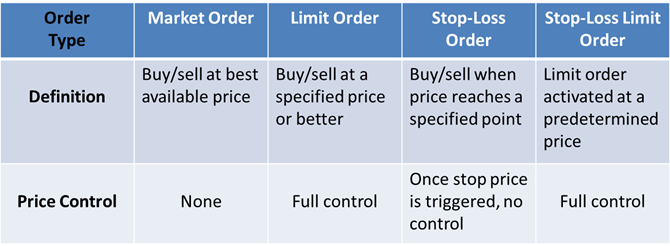ETF Education
Learn the basics of ETFs, how they work, and the risks and benefits to investors.
ETF Creation/Redemption
ETF Tax Efficiency
Benefits of ETFs
Even though exchange-traded funds (ETFs) have become fairly popular, we’re still somewhat surprised by how often people misunderstand the differences between ETFs and mutual funds. It’s natural to compare ETFs and mutual funds, as they are both pooled investments, but we think that understanding the differences in the way the two are structured and traded may help investors choose the investment type best suited to their investment goals.
- As their name suggests, ETFs are investment funds that trade openly on the stock exchange.
- ETFs can be bought and sold on an exchange throughout the day, whereas mutual funds can only be bought or redeemed from the mutual fund company only after the close of trading.
- ETFs typically disclose their portfolio holdings on a daily basis, where mutual funds may only be required to report their holdings on a quarterly basis.
| ETFs | Mutual Funds | |
| Bought and Sold | On an exchange throughout the day | Through mutual fund companies |
| Sales Charges | None, but ordinary brokerage commissions may apply | May have sales loads, purchase and/or redemption fees |
| Minimum Investment | None, an investor can buy one share | May have high minimum investments |
| Liquidity | Ability to trade intraday | Trades only executed once per day |
| Trading Flexibility | Special trading orders are possible (Market, Stop, Limit, Short Selling) | Special trading not possible |
| Trade Restrictions | None | May have short-term trading restrictions |
| Transparency | Typically has full transparency into all underlying holdings | Holdings may only be disclosed quarterly |
| Management Fees | Traditionally low | Dependent on manager style, but typically higher than ETFs |
| Tax Efficiency | Typically more tax efficient due to creation and redemption process | Selling only within the structure may trigger capital gains |
For more information, visit ETFs vs. Mutual Funds: The Age-Old Question.
ETF Trading
The below content is relevant to institutional investors interested in trading exchange-traded funds (ETFs) in significant volume. Individual investors do not always have access to liquidity providers to trade ETFs as referenced below
Trading Best Practices
You may have heard time and time again that exchange-traded funds (ETFs) are bought and sold just like stocks on an exchange. While this is true, it is important to understand the various order types used to execute ETF transactions. The execution aspect of an ETF investment is often under-emphasized, but it can be costly if not traded correctly. Investors need to be familiar with the basic order types available and with how to access their ETF block desk to ensure best execution. Furthermore, they need to be well-versed in their respective order entry system. Here are some of the basic terms used for ETF trading.
Market versus Limit Orders
Market and limit orders are the two most basic order types available—and the difference between the two is vital.
A market order is an order to buy or sell an ETF at the best available price immediately. There is no price control, and while it typically ensures instant execution, the order may get filled at any available price, which may be far from the current bid offer, especially during times of market volatility.
A limit order is an order to buy or sell an ETF with a restriction on the maximum or minimum price to be paid. A buy limit order can only be executed at the limit price or lower and a sell limit order can only be executed at the limit price or higher. While limit orders are not guaranteed to fully execute, they protect the investor against an unforeseen market move or a momentary lack of deep bids and offers. We always recommend utilizing limit orders in a reasonable range of fair value with the understanding that a limit order does not ensure execution.
Stop-Loss Orders versus Stop-Loss Limit Orders
A stop-loss order is an order to buy or sell an ETF at the market price once the ETF has traded at or through your specified or stop price. Once the stop price is triggered, the order turns into a market order. This order is designed as an automatic trigger to immediately trade if the market breaks through a set price threshold. Stop-loss orders can be very dangerous, especially in times of market volatility, and they were a contributing factor to large price swings on August 24, 2015.1
A stop-loss limit order is an order to buy or sell an ETF at the market price once the ETF has traded at or through a stop price, but with a limit price attached to it. The goal here is to activate a limit order at a specified price. As mentioned above, we always recommend utilizing limits when trading, as it gives the investor price control of their orders. Just like limit orders, stop-loss limit orders do no ensure execution.
Block Execution
When trading a large block of an ETF or trading an ETF that has lower volume on an exchange, it is important to employ all tools available, especially your block ETF desk. Many investors believe that only large institutions have access to liquidity providers, who can access the underlying liquidity of an ETF, but that is not the case. Firms like Charles Schwab, TD Ameritrade or Fidelity as well as all the wirehouse platforms typically have block desks to utilize as a resource, and these are just a few examples. Almost all custodian and wirehouse broker-dealers have agency block execution desks available as a resource to their clients. While each platform has its own system, it is important to note that the client must select their order as not held in order to allow the platform desk to execute on the client’s behalf. An order marked or defaulted to "held" will be sent directly to the market and executed without discretion. The Capital Markets team at WisdomTree is always available to guide institutional investors on best trading practices and help them understand all their trading outlets.
1Please note: The New York Stock Exchange (NYSE) no longer accepts or honors stop-loss orders as of February 26, 2016.
Authorized participants (APs) are one of the types of major players at the epicenter of the ETF ecosystem. They are typically U.S.-registered broker-dealers or other financial institutions that have executed agreements with various ETF issuers. These agreements give them the right to create or redeem new ETF shares as demand fluctuates and are vital to the ETF structure.
A market maker provides liquidity and makes markets in ETFs. Most ETFs also have what is called a lead market maker, who is designated by the exchange to provide a measure of liquidity and ensure reasonable spreads and markets. An AP has an agreement with an issuer to create and redeem ETF shares. Not all market makers are APs, but most market makers have access to the infrastructure of an AP. A market maker does not need to be an AP in order to provide competitive markets.
Average daily volume (ADV) does not measure the true liquidity capacity of an ETF. It is a simple measure of on-screen demand, not supply. The true liquidity capacity of an ETF resides in its underlying securities. This liquidity resource can easily be tapped to possibly trade multiples of ADV by utilizing your trading desk resources. This is something that the WisdomTree Capital Markets team can assist with and help guide you to the best resources to facilitate your trade with the best execution.
ETFs are at least as liquid as their underlying basket of securities. Implied liquidity is a more accurate way to measure the liquidity capacity of an ETF compared with the ADV of the ETF wrapper for equity ETFs. Implied liquidity is calculating how many ETF shares can be bought or sold in a single day without affecting the underlying securities. ETF implied liquidity first looks at how many shares of each underlying component are in a creation unit. The final output assumes that if transacting in the underlying securities, how many ETF shares would that translate into while being no more than 25% of the 30-day average volume of the least liquid security in the basket. ETF implied liquidity is a conservative measure of what can potentially be traded in ETF terms based on the ETF’s components.
The creation/redemption mechanism allows for the increase or decrease of ETF shares based on demand without affecting other investors of the fund. This is an important difference compared with a mutual fund, where any buying or selling in the fund affects all investors. If there is increasing demand for a specific ETF, new shares can be created to meet that demand in exchange for underlying assets; if demand decreases, shares can be reduced by exchanging ETF shares for assets. This flexible process is solely done by an AP. It is important to note that the investor never makes the decision to create or redeem; this is a back-office function determined by the broker.
The Capital Markets team at WisdomTree is a key resource for all ETF investors. We maintain relationships with all of the major trading desks, ranging from proprietary trading firms to global banks to a hybrid of the two to platform and custodial desks. We can easily work with you on determining who your resources are and how to best access them, and we can provide an introduction if needed. We are extremely familiar with the various nuances of the platform desks, so we are here to help make sure you receive the best trade execution experience possible.
Fixed income ETFs have multiple benefits. They allow investors to easily trade the fixed income asset class on an exchange, instead of over the counter, which is how fixed income assets are usually traded. Fixed income ETFs give clients transparency to their exposure by providing daily fund holdings. This is very different compared with a mutual fund, which discloses holdings only on a quarterly basis with a 90-day lag. Fixed income ETFs also have the benefit of potentially having a tighter bid/ask ETF spread than the underlying bonds. Lastly, investors can potentially access on-exchange liquidity, and no transaction has to occur in the underlying bonds. ETFs provide additional layers of liquidity.
While ETFs and stocks both trade on a stock exchange, there are some notable differences. Unlike a stock, which is a single security, an ETF is a wrapper made up of a basket of securities. The shares outstanding of an ETF can fluctuate with demand as it has another avenue of liquidity through the underlying basket. A stock has a finite number of shares that can be traded. Additionally, ETFs typically provide a more diverse exposure to a particular sector or country. Stocks provide exposure to one particular company.
- NAV - Represents the value of the ETF at their last price of the prior trading day. The ETF will always trade at a premium or discount to the last NAV that was struck the night before. Intraday Indicative Value is a better measure of ETF fair value on an intraday basis.
- Intraday Indicative Value (IV) - Represents the ETF price based on the last traded price of the underlying basket. For U.S. markets this price should closely align with the current ETF price. For international ETFs the IV becomes stale once the underlying market has closed for the day as the ETF begins to trade as proxy. That premium or discount from IV is based on expectations for the next trading day. This fair value of the ETF is calculated by using futures, the current U.S. markets or other correlated proxy’s. The IV will be similar to the current day NAV that will be struck that evening.
- Last Price - The last traded price across all exchanges.
- Official Closing Price - The official last price of the ETF on the primary listing exchange.
Blogs
WisdomTree CAPITAL MARKETS
The WisdomTree Capital Markets team is a U.S.-based team with global coverage that functions as the key point of contact for both investors and the trading community for all things trading related to WisdomTree exchange-traded funds (ETFs). The team is responsible for maintaining relationships across the ETF support ecosystem, including market makers, authorized participants and exchanges. Additionally, the group advises institutional investors, RIAs and wealth managers on the most efficient means for implementing their trading strategies, and helps investors navigate their specific path in the ecosystem to achieve liquidity.
Register or Sign In to speak to the Capital Markets team. The service is only available for financial professionals.





